Introduction
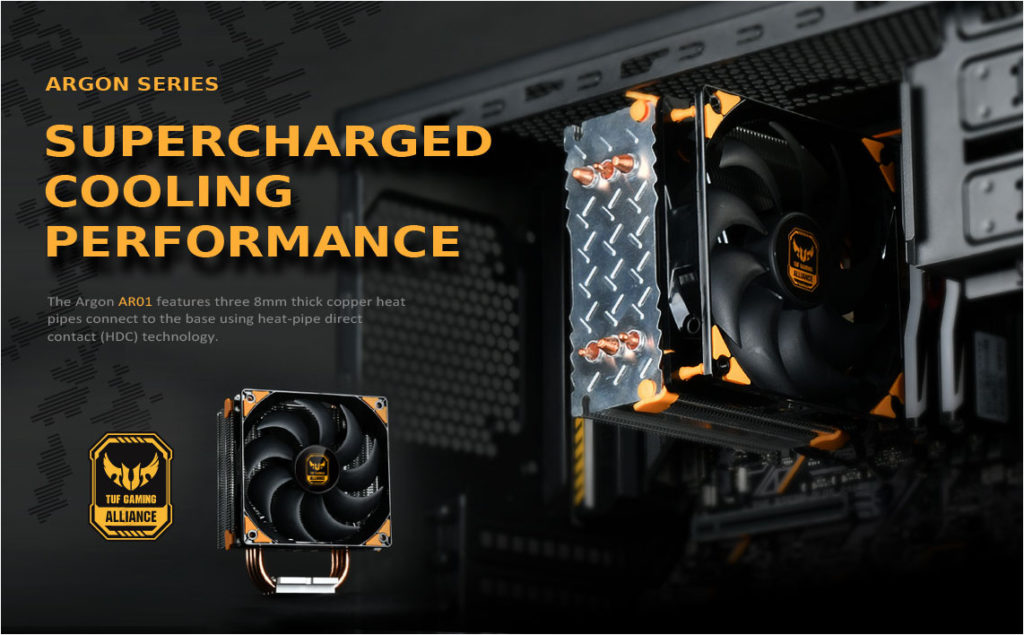
Today marks the first time we will be using our new Air Cooling test platform. This platform is built around Ryzen 7 2700X processor with a manufacturer claimed TDP of 105W. This should provide a reasonable usage case that we are likely to see with some of today’s most demanding air-cooled CPU coolers. So, on the bench today is the SilverStone AR01 V3 (SST-AR01-V3) which is part of SilverStone’s Argon series and it is cobranded with the ASUS TUF Gaming Alliance. Per SilverStone, there are no performance differences between the V2, V2.1, and V3 of the AR01 cooler as the only differences are the color scheme, decals, and branding.
SilverStone AR01-V3 Overview
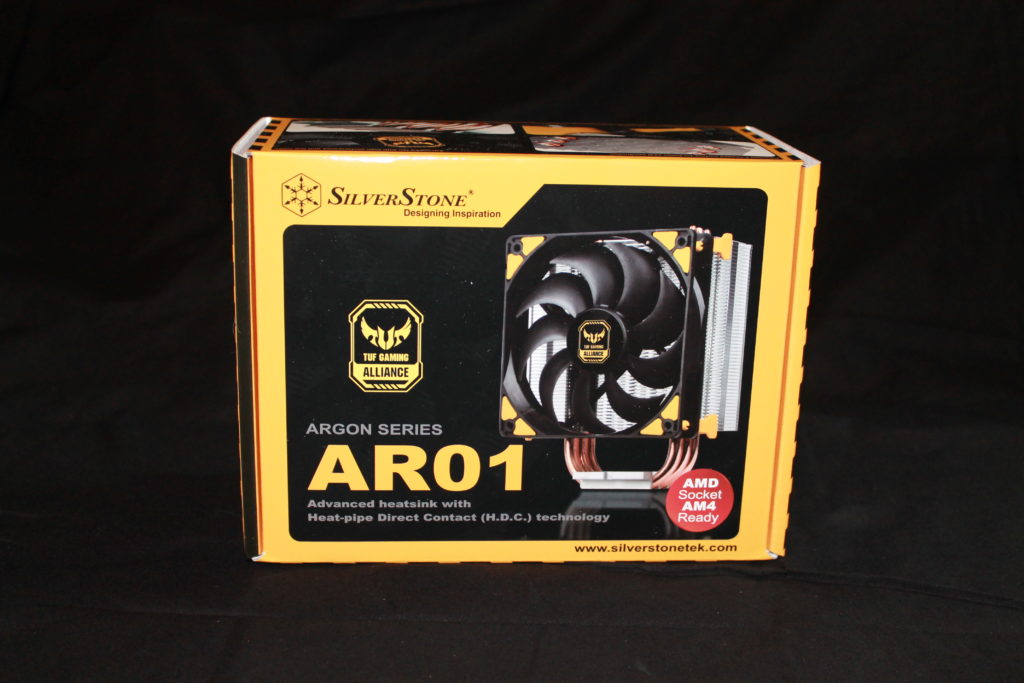



The SilverStone AR01-V3 cooler is an air cooler that is designed to work on a wide variety of sockets, including Intel’s LGA775/1150/1151/1155/1156/1200/1366/2011/2066 and AMD’s AM2/AM3/AM4/FM1/FM2. While this covers most high-end desktop processors, it is not compatible with the Threadripper’s TR4 socket (which is probably a good thing).
Heatsink
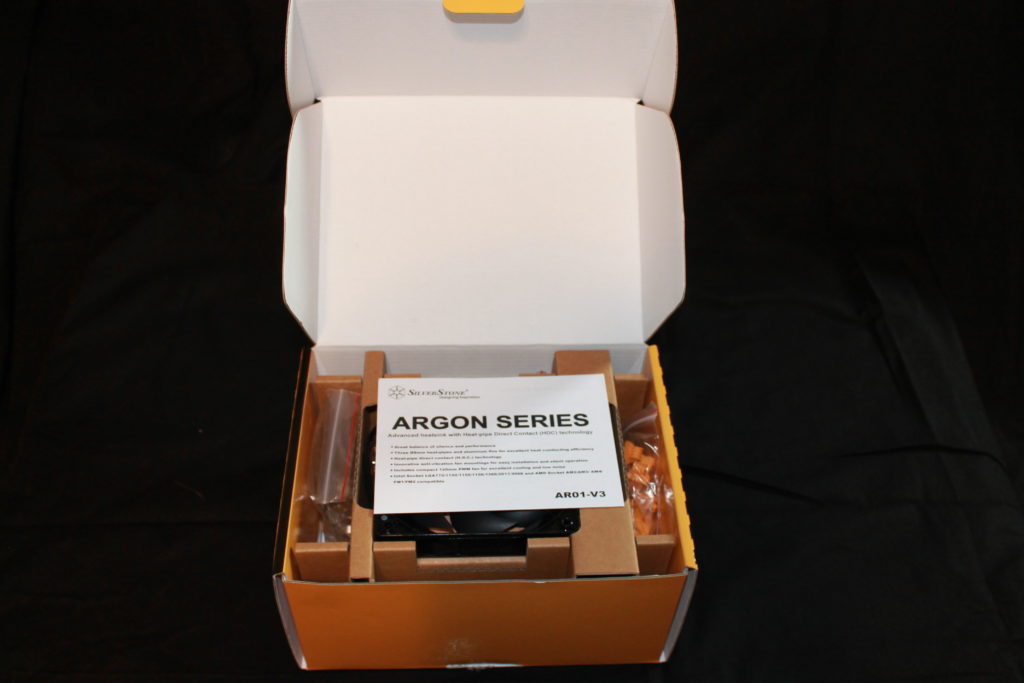
The heatsink is constructed of copper heat pipes and aluminum fins. The AR01-V3 sports three copper heat pipes that are 8mm in diameter. The AR01-V3 also utilizes what SilverStone calls its “HDC” technology which stands for heat-pipe direct contact. This simply means the heat pipes form the cooler base and come into direct contact with the heat spreader.

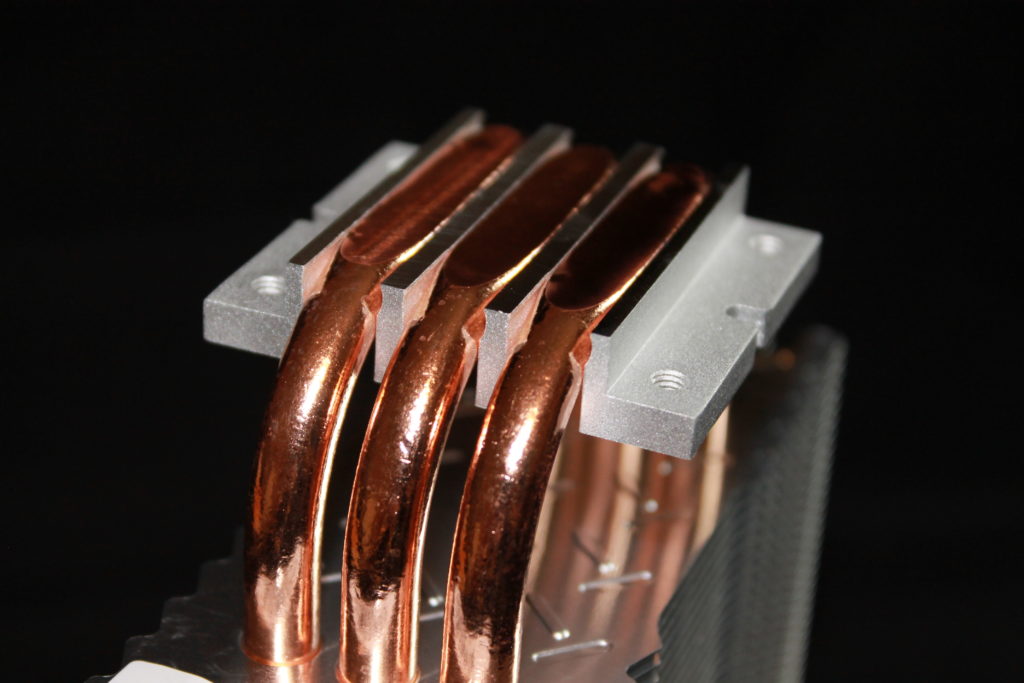
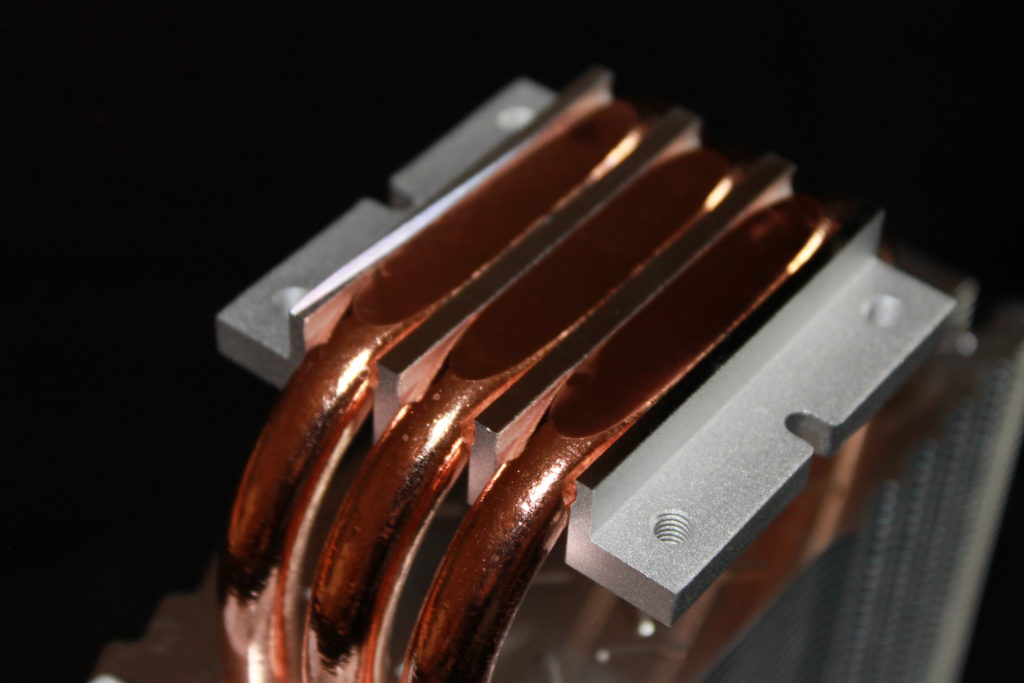
The fins on the AR01-V3 have a unique layout and construction to them as diagrammed below.

The varying distance between fins is claimed by SilverStone to cause more turbulence and delays airflow from exiting the cooler. Thus, more heat will be transferred to the same volume of air versus a setup where the gaps were straight and the air is exiting more quickly. However, one does have to wonder what this turbulence will do to the noise profile of this cooler.
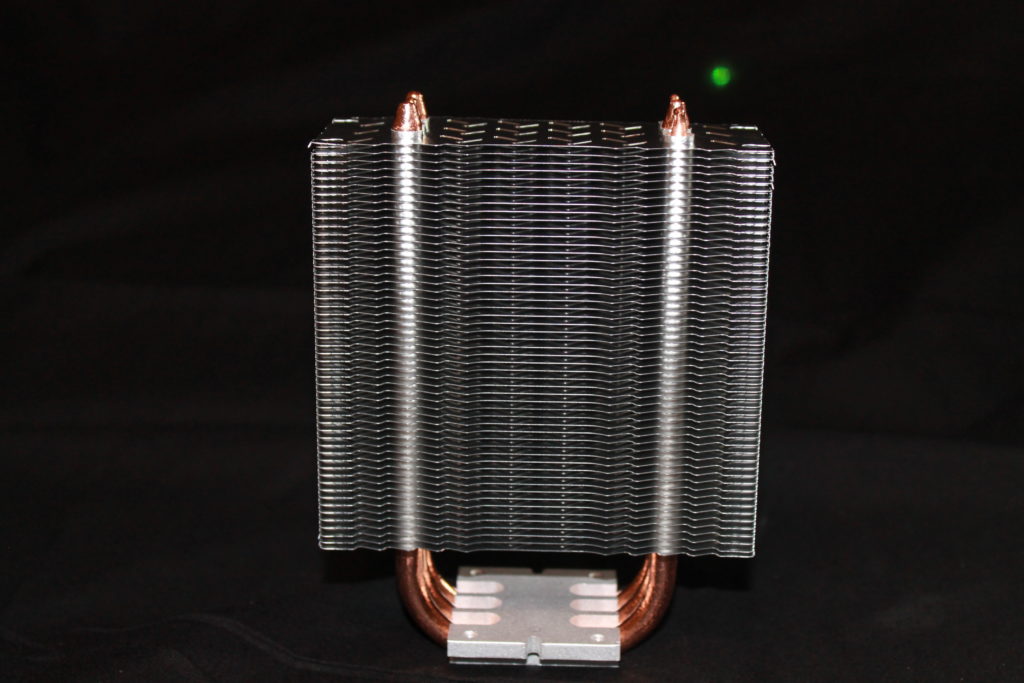
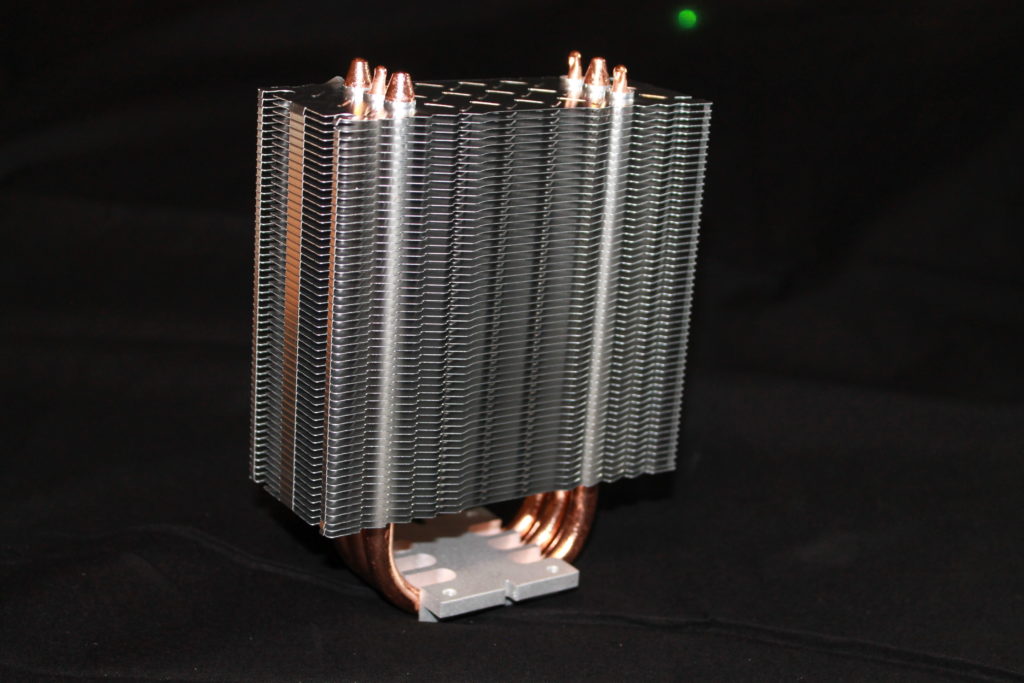
The second unique part of the construciton of AR01-V3 is the fins themselves. In this case, SilverStone has gone for a design that is not flat. Rather, the fins feature dimpled arrangement of “T’s” across their surface. This is said to aide in better heat conduction as well.
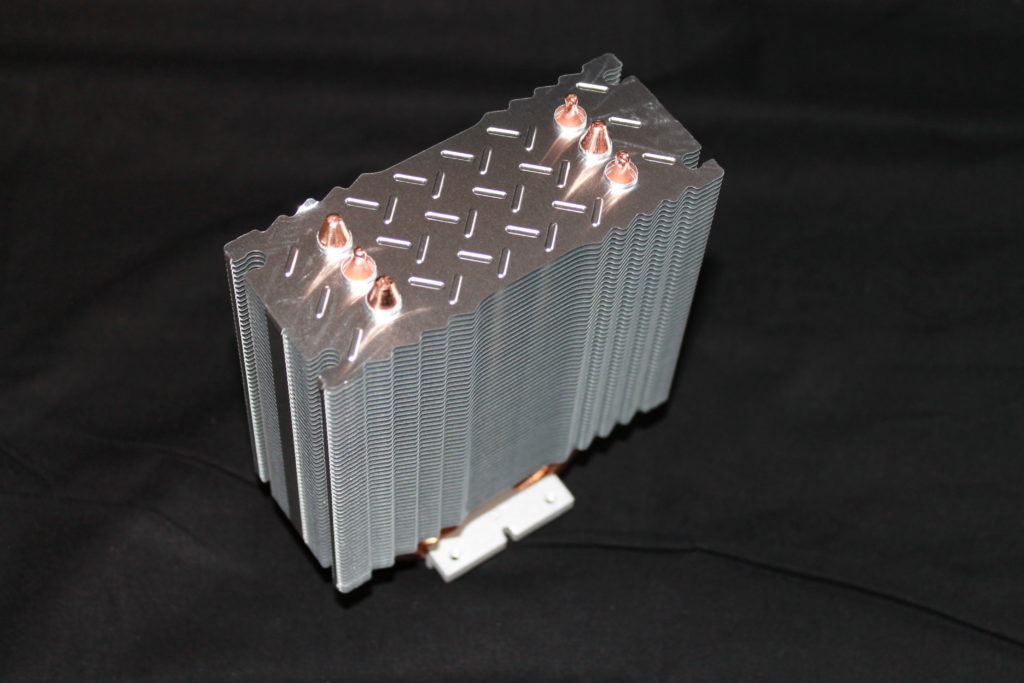
You can see this feature on the top of the AR01-V3 here. However, it is carried on throughout the cooler. How much this will help we will see later, of course. Overall, the heatsink weighs in at 420g without the fan. So, don’t drop it on the cat.
Fan


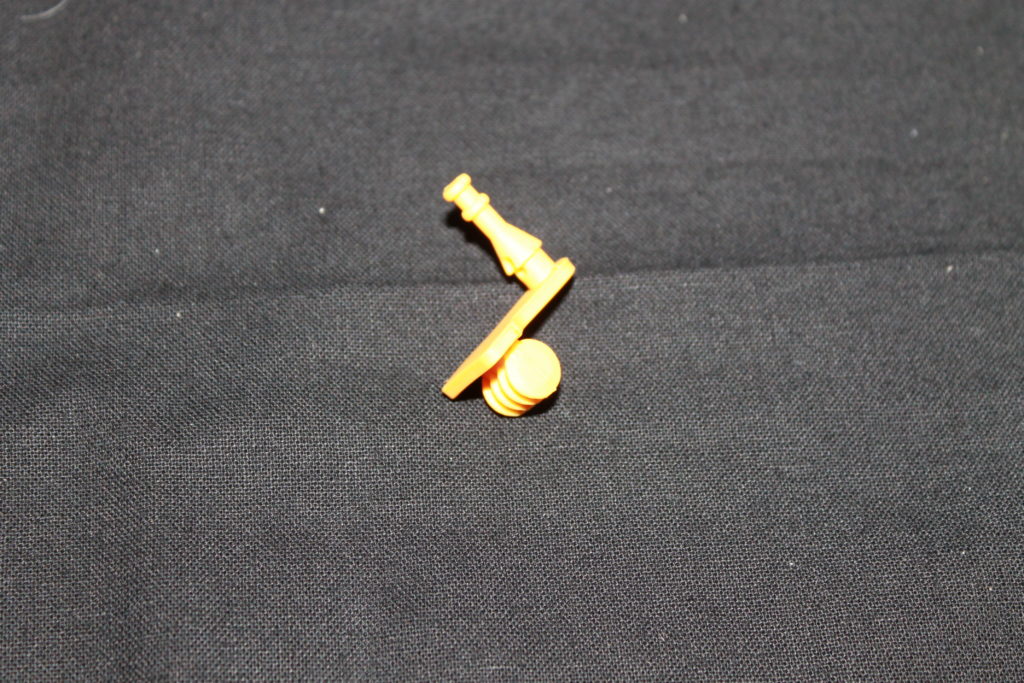
The included CC12025H12S fan looks very similar to SilverStone’s standard-sized 9 bladed Air Penetrator 120mm PWM fans that have a hydro bearing design (in this application the fan is rated for a lifetime of 40,000 hours). The fan is connected via a PWM fan connector. The hydraulic bearing equipped fan supports a fan speed of 600 to 2,200 (+/-10%) RPM at a reported noise level of 15 to 38 dB(A). The stated airflow maximum is 70.65 CFM with a static pressure maximum of 3.05 mm H2O. The power rating on this fan is 0.25A at 12v. The fans also have patented anti-vibration rubber fan mounting pads on the corners to reduce vibration.

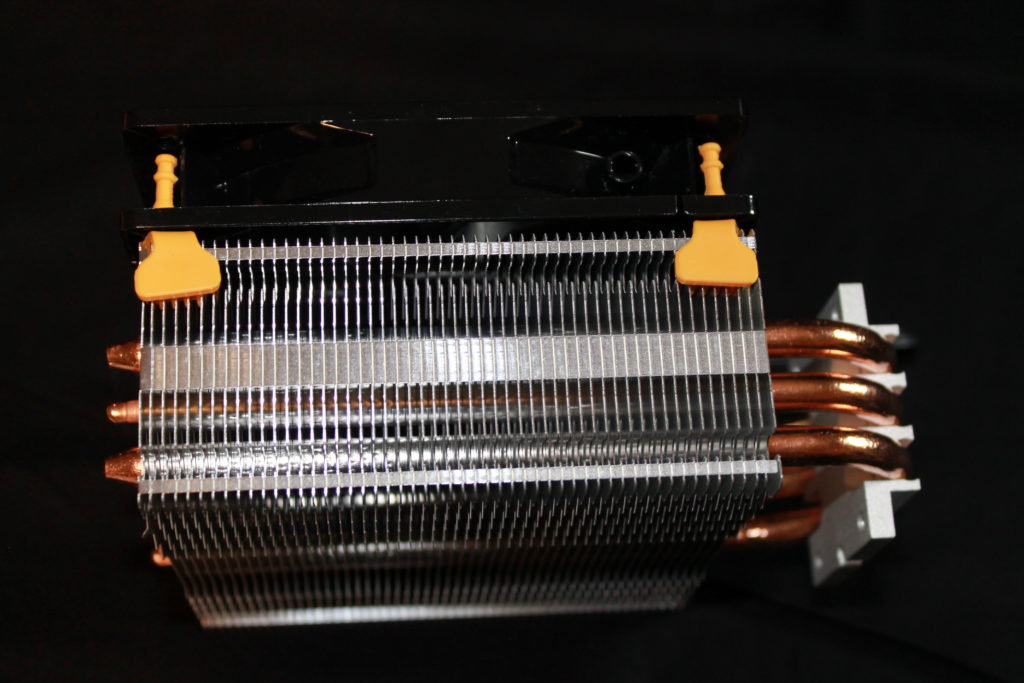

The fully assembled HSF can be adorned with the ASUS TUF Gaming Alliance decals. While not RGB light-tastic, the branding does bring some attention to what would be a rather boring design otherwise. For those people with windows on their cases this will be of more interest than for those who do not.
Let’s move on now to our test setup and installation of the SilverStone AR01-V3.
